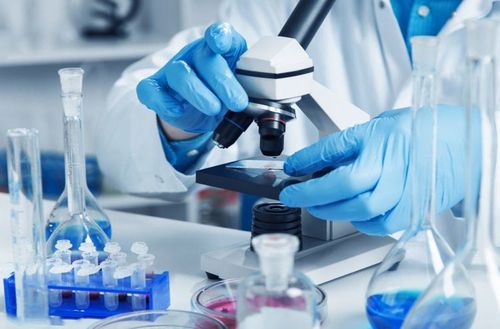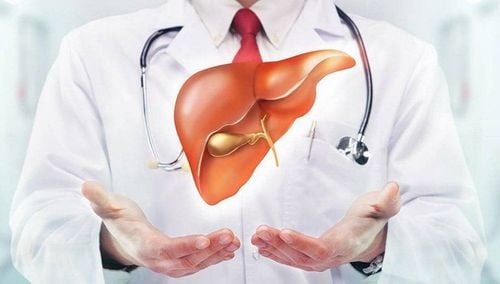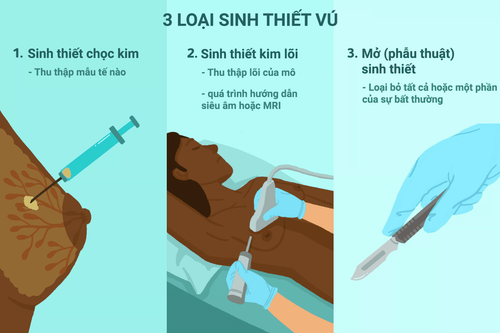This is an automatically translated article.
Article by Master, Doctor Nguyen Thi Hang - Pathology Unit - Laboratory Department - Vinmec Times City International Hospital
Performing fine needle aspiration cytology (FNAC) for superficial or deep lesions is becoming increasingly common in practice, saves time, and is a detailed diagnostic procedure. low cost, while providing fast and accurate diagnosis.
1. What is cell mass engineering?
Diagnostic cytology is the science of interpreting cells including: Cells shed from the surface epithelium and cells removed from various tissues. The mass cytology technique can be performed using a variety of methods, including sampling and testing for shed cells such as vaginal smears, sputum, urine, body fluids, etc. Sampling cells by brush, scraping or scrubbing techniques. George N Papanicolaou introduced cytology as a tool to detect cancer and pre-cancers in 1928.
The degree of accuracy of cytology from different sites of the body depends largely on sampling quality, sample handling, staining, and material sample interpretation. Any unsatisfactory one of the above steps will have an adverse effect on the quality of cytological diagnosis. Evaluation is sometimes difficult, therefore, excess material after completion of cytosolic processing can be treated and paraffinized as a bulk cell technique, which may allow recovery. be a small amount of sample cell material.
In the study by Elizabath P Mathew and Vijayalakshmi Nair, the sensitivity, specificity and diagnostic accuracy of cell mass were 71.11%, 100% and 71.73%, respectively. These metrics for the FNA slab are 62.22%, 100%, and 63.04%, respectively.
>>> Natural killer (NK) cells: What you need to know
In a study by K T Brown et al., retrospectively evaluating the records of 100 biopsies, performed continuously since January/ 1986 to August 1987, included 84 patients who had both smear and mass cytology results and who had clinical and surgical comparisons. Study results showed that 64/84 biopsies (76%) had malignant cells, 11 cases had evidence of benign process and 9 of these cases were undiagnosed. Melanoma cells were diagnosed on cytology in 55/64 cases (86%) with melanoma cells while in the other 9 patients melanoma cells were only shown on stools. cell mass. In the group of benign disorders, only 1 case (9%) was diagnosed on cytology, whereas cytology was not. This study concluded that the analysis of the cell mass on the residual specimen after smear treatment could increase the diagnostic accuracy by up to 14%.
Although the benefits of the cell mass technique are well acknowledged, it is still not commonly used and widely used in Vietnam.
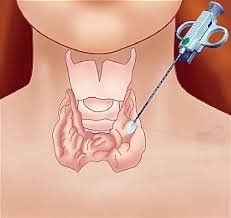
2. Technical principle of cell block
In order to concentrate single cells, scattered in fine needle aspiration specimens into a mass that can be transferred, cast, cut and dyed like conventional histological procedures, helping to maximize the savings of patient samples taken out. from the patient's body.
>>> Fine-needle aspiration cytology (fna) - Lymph node diseases
3. Cell block technique in cytological diagnosis
3.1 Prepare Doctor, technician;
Means and chemicals:
10 x 1.6 cm glass test tubes; Formol neutral 10%, thrombin or agar 3%; Centrifuge, cassette, slide, histological wrapper (non-adhesive); Small wooden sticks, cotton wool (waterproof type), refrigerator, microwave oven; Technical tools and chemicals of routine histological procedures (H&E, PAS...). Patient: The patient underwent fine-needle aspiration (FNA) procedure to collect samples for cytology.
Test sheet: Fill in the patient's administrative information (name, age, bed number, room number, department), clinical diagnosis, summary of clinical and laboratory information, requirements fine-needle aspiration cytology (cellblock FNA); date and time of specimen collection.
>>> Fine Needle Aspiration Cytology (FNA) - Mammary gland lesions
3.2 Procedures Sampling collection:
FNA specimens are aspirated at Clinical Departments or Pathology Departments. After the specimen has been collected, 1 portion is pumped out onto the slide to make 1- 2 slides cell smears, the remainder (excess fluid in the needle cores or cylinders) is washed with 5-10 ml. formol 10% (use support needles if necessary), put it in a test tube and immediately send it to the Department of Pathology - Cytology. To obtain more patient samples, a needle in and out, a new aspiration aspiration, and direct injection and rinsing of the needle core into the tube can be performed instead of smearing the slide. Note:
If there is no 10% neutral buffered formol for washing, physiological saline can be used instead, but after washing, the specimen must be immediately sent to the Department of Pathology. Never use a needle that has been washed with formalin to aspirate the patient again. >>> Tests used on biopsy and cytology samples to diagnose cancer
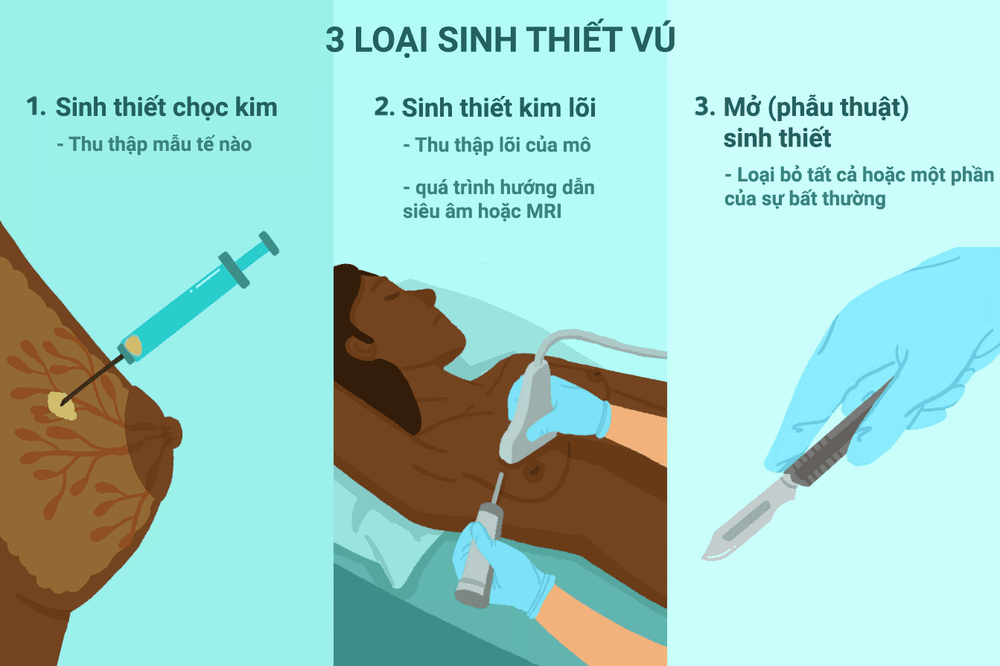
Carry out the technique
Step 1: Put the test tubes containing FNA specimens into the centrifuge for 10 minutes at 2000 rpm. Step 2: Remove the upper clear fluid layer to remove the cell sediment and then fix the cell residue in 10% neutral buffered formol for at least 1 hour. Step 3: Centrifuge the specimen again at 2000 rpm for 10 minutes if necessary (if the specimen has formed a solid mass, the procedure can be switched directly from step 2 to step 4). Step 4: Remove the formol into the waste water container. Add a small amount of thrombin or 3% agar (3g of agar powder dissolved in 100ml of distilled water) melted (microwave for 10 seconds at medium temperature) to the test tube. Wait for thrombin or agar to solidify. Place in the refrigerator to allow the agar to solidify faster if necessary. Thrombin or agar has the effect of reinforcing the solidity of the cell mass. Note: Make sure there are no air bubbles when putting the agar in the tube. Step 5: Use a small wooden stick to remove the cell mass from the tube and place on a piece of paper (non-stick paper available in the histology laboratory). Wrap the cell mass in this paper and place it in a cassette labeled with the patient's name and cell block number. Step 6: Inject the cassette with the cell mass into the routine histological procedure. Step 7: The cut pieces from the cell mass are then stained with Hematoxylin – Eosin (H&E) and special staining (Periodic acid – Schiff (PAS), mucicarmine...) and immunohistochemical staining as needed. Slices are usually 3–5 μm thick. >>> IHC test in breast cancer test positive for HER2
Verification of results:
Reviewer: Pathologist - Cytologist. Cell mass preserves tissue structures better than cell smears, allowing for multiple excision of the same slides, H&E, specialty staining, and immunohistochemical staining for diagnosis. can identify many types of lesions such as fungi, malignant lesions or direct the origin of the primary tumor. 3.2 Errors and handling The number of FNA specimens is usually very small, so it is recommended to always use a 1.6 x 10 cm KT test tube (the type that fits into the laboratory's centrifuge rack) to store the needle core washing solution, to avoid the situation of having to change to many types of tubes to fit the centrifuge, causing loss of samples during the technical process. During the technical process, patients may be confused due to the multi-step process, the test tubes are broken and the specimens are lost... It is necessary to work in a focused manner, always checking and comparing to avoid unnecessary errors.
Please dial HOTLINE for more information or register for an appointment HERE. Download MyVinmec app to make appointments faster and to manage your bookings easily.
References:
Role of cell block in cytopathologic evaluation of image-guided fine needle aspiration cytology. Elizabath P Mathew and Vijayalakshmi Nair. Jul-Sep; 34(3):133–138., s.l. : J Cytol., 2017. Cytologic analysis in fine-needle aspiration biopsy: smears vs cell blocks. K T Brown 1, R K Fulbright, A M Avitabile, B Bashist. s.l. : AJR Am J Roentgenol. , 1993 Sep;, Vols. 161(3):629-31. Cytological diagnosis of pleural fluid by cell mass technique. Nguyen Thi Hang, Vu Hoang Anh, Nguyen Thu Huong, Bui Manh Thang. Hanoi: Journal of Clinical Medicine, 2012.







